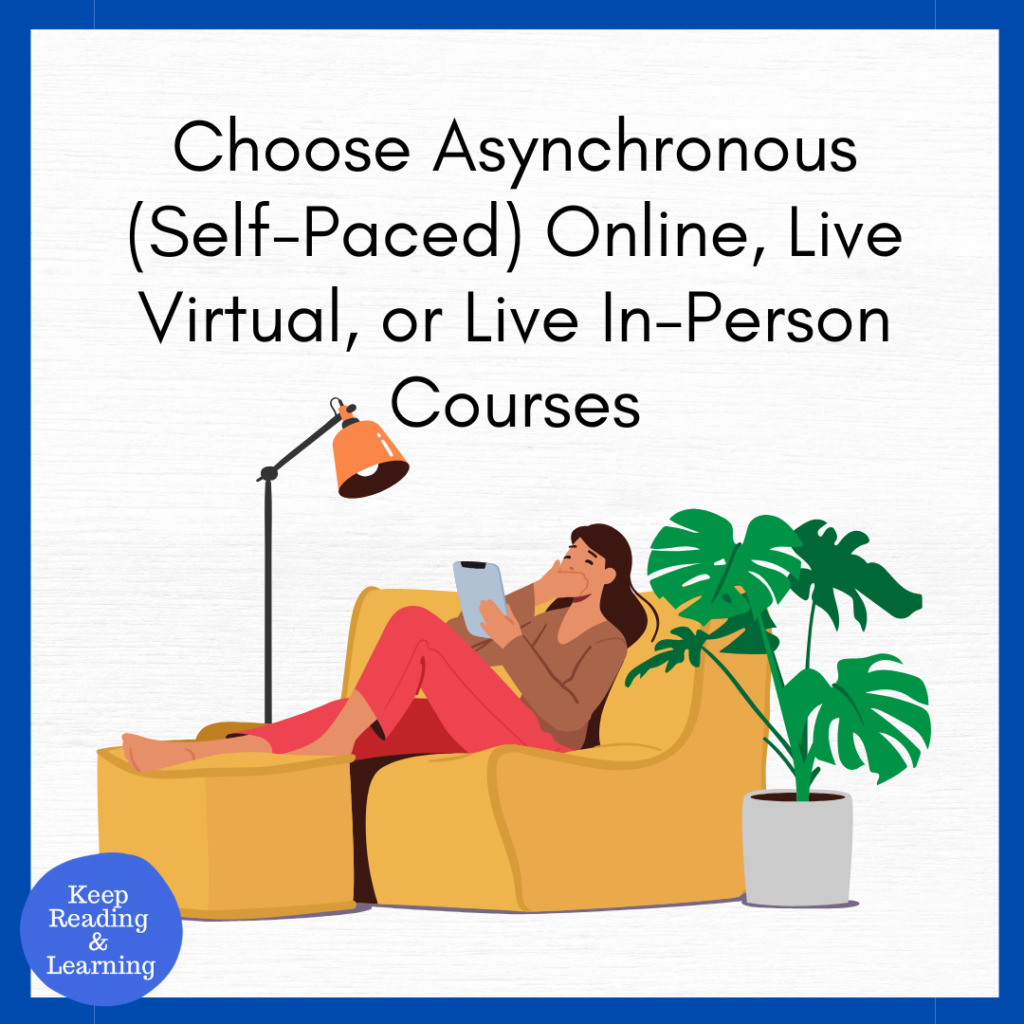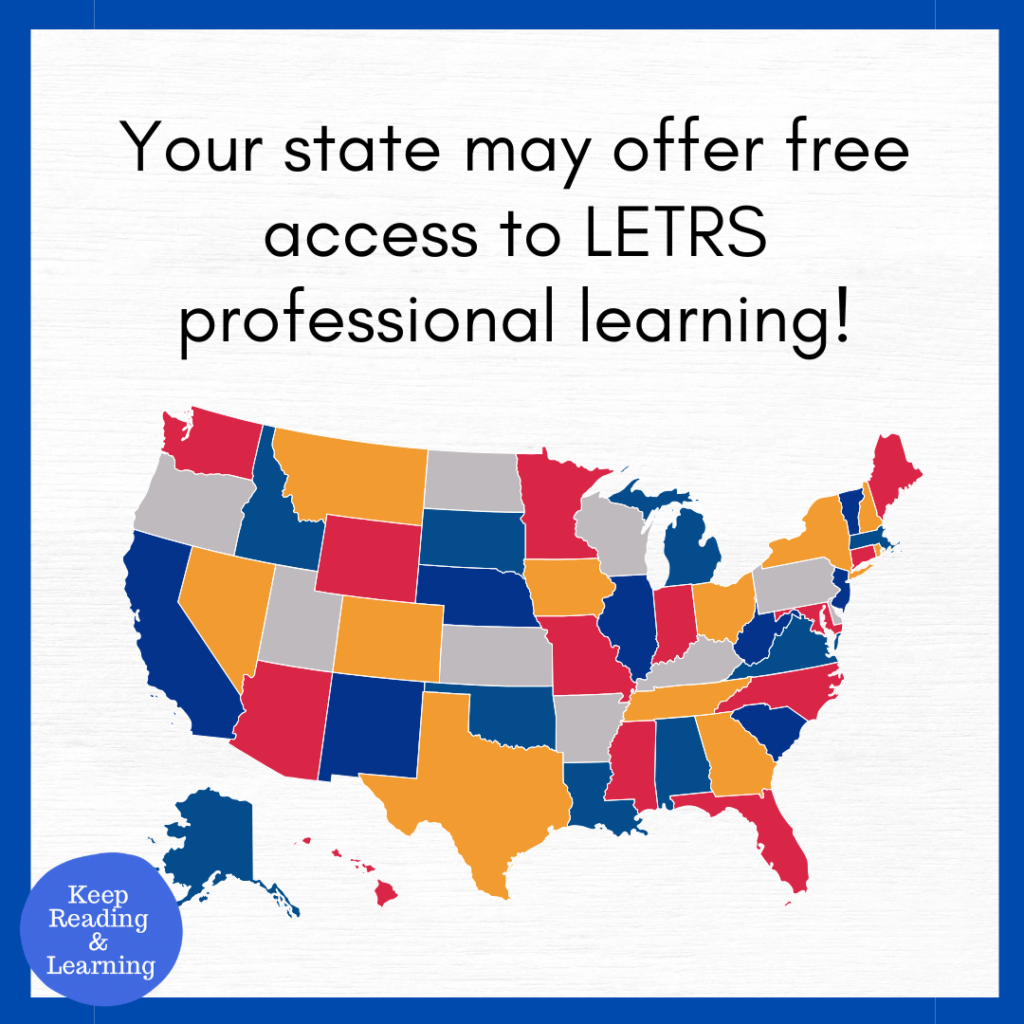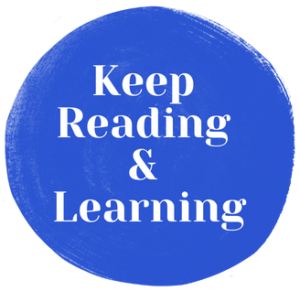If you’re looking to deepen your understanding of how we learn to read and how to help your students succeed, science of reading courses are the way to go! Whether you’re aiming to climb the salary scale or simply want to enhance your teaching skills, these courses offer something for every educator interested in early literacy. Earning college credits isn’t cheap, but for many teachers, it’s a necessary step to advance. My goal is to help you find courses that are not only worth your time and money but will also boost your knowledge and make that tuition bill a little easier to handle. In this post, I’m sharing eight courses that will help you become a more effective literacy teacher!
Course Costs: Finding the Right Balance Between Affordability and Value
The science of reading courses in this list range from $189 to over $1,000, giving you a variety of options depending on your budget and goals. Personally, I’ve taken a mix of courses—some were expensive, like my Wilson Reading System certification, because I knew they would open new doors for me. Others were more budget-friendly because I was just looking to meet salary advancement requirements while still learning something useful. Finding the right balance between affordability and value has always been my goal, and I know many teachers are in the same boat! In this post, I’m focusing on science of reading courses that not only meet salary advancement requirements but also make a real impact on your teaching. Just be sure to check your district’s approval process to ensure the credits will count!
I’m not affiliated with any of the companies or universities mentioned in this post, I’m just sharing options I think are worth considering. If I’ve taken a course, I’ll mention that. For the ones I haven’t, I’m highlighting them based on their potential value for teachers. If you’ve taken any of these courses, especially the ones I haven’t, I’d love to hear your thoughts!
Before You Enroll: Know Your Learning Style!
Many of these science of reading courses are self-paced and online, which can be a great option for teachers who need flexibility. Consider your learning style and whether you can stay focused without a set schedule. If you do well with independent learning, self-paced online courses could be a perfect fit. Not great at time management? A couple of courses, including LETRS and IMSE’s options, offer live virtual or live in-person instruction.

To the best of my knowledge, the prices listed below are accurate at the time of posting, but they may change. Be sure to check the current cost before enrolling. This post contains Amazon affiliate links for textbooks associated with some courses.
The courses are loosely separated into two sections: general science of reading courses and special education or dyslexia-focused courses. Let’s dive in!
Science of Reading Courses
How the Brain Learns to Read
- Course Name: How the Brain Learns to Read: Decoding, Comprehension and Motivation, EDUC_717W
- Institution: University of Laverne
- Time to Complete: Self-paced, one year
- Semester Credits: 3
- Cost: $420
- Required Reading (included in total cost): How the Brain Learns to Read, 2nd Edition by David A. Sousa and Raising Kids Who Read: What Parents and Teachers Can Do by Daniel T. Willingham, PhD
Why Consider This Course: Understanding how the brain learns to read is essential for any teacher striving to improve their literacy instruction. This course will teach you the cognitive and neurological processes behind reading, helping you bridge the gap between research and classroom practice. By integrating insights from brain science, psychology, education, and linguistics, it equips teachers with evidence-based strategies for fostering reading skills at every stage—from early childhood through high school. Learn why the phrase “learn to read and then read to learn” is not really accurate, as this course explores how both processes continue indefinitely!


7 Super Strategies for Teaching the Science of Reading
- Course Name: 7 Super Strategies for Teaching the Science of Reading, OL-5341
- Provider: Teaching Channel with Learner’s Edge
- Institution: Several universities to choose from for credits
- Time to Complete: Self-paced, up to 8 months
- Semester Credits: 3
- Cost: $489.00 for graduate credits; $135.00 for continuing education
- Required Reading (included in total cost): 7 Might Moves by Lindsay Kemeny
Why Consider This Course: If you want a practical, research-based approach to teaching reading in K-3, this course is a great option. It takes the science of reading research and breaks it down into seven key instructional moves that are easy to understand and apply. Instead of theory without direction, you’ll get hands-on strategies for phonemic awareness, phonics, decodable texts, sight words, fluency, vocabulary, and comprehension—everything you need to build strong readers. Plus, with a structured 10-module format, you’ll learn at your own pace while seeing exactly how to implement what you learn. Whether you’re new to structured literacy or refining your practice, this course will help you teach reading with confidence and impact.

Top 10 Tools™ by 95 Percent Group
- Course Name: Top 10 Tools™
- Provider: 95 Percent Group
- Institution: Northwest Nazarene University
- Time to Complete: Self-paced, one year
- Semester Credits: 3
- Cost: $180 for the course, $525 for graduate credits
Why Consider This Course: If you’re serious about strengthening your reading instruction, Top 10 Tools™ by 95 Percent Group is a course worth checking out. Created by Dr. Deb Glaser, it’s a deep dive into the science of reading research, packed with real-world teaching examples and practical strategies you can use right away. The course is broken into 10 easy-to-follow tools, making it manageable even for busy teachers. Plus, it aligns with the International Dyslexia Association’s Knowledge and Practice Standards, so you know you’re learning best practices backed by research. Whether you want to sharpen your skills, improve student outcomes, or even prepare for the KPEERI exam to pursue CERI certification, this 45-hour course gives you the knowledge and confidence to make a real impact in the classroom. You can also request a free 21-day trial to see if the format suits you!

LETRS (Language Essentials for Teachers of Reading and Spelling)
- Course Name: LETRS (Language Essentials for Teachers of Reading and Spelling)
- Provider: Lexia
- Institution: American College of Education
- Formats Available: Self-directed online; Guided (includes live meetings in addition to online coursework)
- Time to Complete: approximately 48-60 hours
- Semester Credits: up to 12
- Cost: See below.
Why Consider This Course: If you’ve been in the elementary education world for any length of time, you’ve probably heard of LETRS training. It has become incredibly popular among teachers, and for good reason! Lexia LETRS is all about helping educators understand the science of reading and translating that research into effective classroom practices. It focuses on several critical areas: understanding the “why” behind literacy, enhancing teacher effectiveness, improving reading instruction, and ultimately transforming how we teach reading. This professional learning program is not only relevant but also practical, making it a great choice for any teacher looking to deepen their literacy knowledge.

Currently, LETRS training is available at school, district, and state levels but is not available to individuals. Many states offer the training for free, but you’ll need to snag one of the limited available spots. Check here to see what’s happening in your state. If you want to earn graduate credits, you’ll pay an extra fee for those.

IMSE: Various Topics
- Course Topics: Foundational literacy instruction, morphology/word study, phonological awareness
- Provider: IMSE
- Institution: Ashland University
- Formats Available: In-person; Virtual/Live; Virtual/Asynchronous
- Time to Complete: Varies by course
- Semester Credits: 1 to 3, depending upon the course
- Cost: Training costs range from $600-$1,500; College credits cost $155-$465 depending on the course
Why Consider This Course: IMSE’s trainings are a bit more expensive than some of the other options listed here, but the value matches the price tag! With several trainings to choose from, you’ll find one that matches your professional goals. After completing the training, you can request graduate credits for an additional fee.
When I took IMSE’s Comprehensive 30-hour training years ago, I returned to my resource classroom with renewed enthusiasm and a strong sense of direction as far as what and how to teach. If the Understanding Dyslexia course (below) taught me how to recognize dyslexia, IMSE’s Comprehensive Training (now called Comprehensive OG+ or Comprehensive Orton Gillingham Plus) was the first step in learning how to teach the students that I suspected may have dyslexia. I learned the knowledge and skills necessary to implement immediate changes in my reading groups. The materials provided gave me the structure I needed to plan my lessons with ease.
Although I’m speaking from my experience as a special education teacher, classroom teachers and parents who want to take control of their children’s intervention also sing the praises of IMSE’s courses. You’ll learn the basics of structured literacy instruction and feel ready to implement your new knowledge almost immediately.

Dyslexia and Special Education Courses
Understanding Dyslexia
- Course Name: Understanding Dyslexia, EDUC_717M
- Institution: University of Laverne
- Time to Complete: Self-paced, one year
- Semester Credits: 3
- Cost: $420
- Required Reading (included in total cost): Essentials of Dyslexia Assessment and Intervention by Nancy Mather and Barbara J. Wendling
Why Consider This Course: This course changed the trajectory of my career! You may have seen my post about the diagnosis of Double Deficit Dyslexia that made me realize I was ill-equipped to service my students who struggled with reading. Signing up for this course was one of the first steps I took on my “know better, do better” journey.
Understanding Dyslexia systematically walks you through the required reading, Essentials of Dyslexia Assessment and Intervention. If you’re like me, reading professional books can be a challenge without some structure to keep you on track. Completing the course ensured that I worked through the book in manageable chunks, pausing to digest what I learned.
I had several “aha moments” while reading the textbook. I suddenly understood the students on my caseload with clarity that I did not have before. Completing this course gave me the knowledge I needed to identify students with dyslexia and to realize why my instruction at the time was not meeting their needs.

English Language Learners’ Struggles: Signs of Difficulty– or Disability?
- Course Name: English Language Learners’ Struggles: Signs of Difficulty– or Disability?, EDUC_718I
- Institution: University of Laverne
- Time to Complete: Self-paced, one year
- Semester Credits: 3
- Cost: $420
- Required Reading (included in total cost): English Language Learners: Differentiating Between Language Acquisition and Learning Disabilities by J. Klingner and A. Eppolito and Why Do English Language Learners Struggle With Reading? by J. Hoover, L. Baca, and J. Klingner
Why Consider This Course: Many teachers today work with English Language Learners (ELLs) who are not only learning a new language but also tackling all the usual academic subjects—an enormous challenge! English isn’t exactly an easy language to master, even for native speakers, so it’s no surprise that ELLs struggle with reading and writing. But when a student is having persistent difficulties, how do you know if it’s just part of the language-learning process or if there’s an underlying learning disability? Since the signs of both can look similar, it’s easy to see why students sometimes get misidentified for special education services or, on the flip side, don’t get the support they actually need. This course dives into that dilemma with two evidence-based books that help teachers make informed decisions, offering practical strategies to support ELLs effectively.
If you’ve ever been on the evaluation team for a student who is a multilingual learner and the team couldn’t agree on the root cause of the child’s reading weakness, this course will provide clarity. Throughout this course, I took many notes that helped me change the way I looked at special education evaluations for multilingual learners: I chose my assessments more carefully, I interpreted the scores in a new way, and I learned what other types of data and anecdotal information to collect when considering a student’s eligibility for special education services.
I also love to tell this story: I emailed the folks at the University of LaVerne and asked them to create a course to help me learn about evaluating English Language Learners for special education eligibility. A few months later, they wrote back and essentially said, “Sure, here it is!” So if you end up enrolling in this course, you’re welcome. 😉

A Closer Look at Dyslexia, Dysgraphia, and Dyscalculia
- Course Name: A Closer Look at Dyslexia, Dysgraphia, and Dyscalculia, OL-5212
- Provider: Teaching Channel with Learner’s Edge
- Institution: Several universities to choose from for credits
- Time to Complete: Self-paced, up to 8 months
- Semester Credits: 3
- Cost: $489.00 for graduate credits; $135.00 for continuing education
Why Consider This Course: If you’ve ever worked with a student who just couldn’t seem to read fluently, struggled to get their thoughts on paper, or found even basic math confusing, you’ve likely encountered dyslexia, dysgraphia, or dyscalculia, whether you realized it or not. Many teachers have little formal training in these common learning disabilities, yet understanding them can make a huge difference in how we support our struggling students. This no-nonsense course breaks down what you really need to know, from the science of reading research to assistive technology and engagement strategies that work. You’ll also gain insight from families, colleagues, and students who live with these challenges every day. Whether you teach general or special education, work as a support specialist, or tutor privately, this course will give you practical tools to help learners with dyslexia, dysgraphia, and dyscalculia succeed.
Wrapping Up: Choosing the Right Course for Your Teaching Journey
As you consider these science of reading courses, remember that investing in your professional growth can pay off in big ways, both for your career and your students’ success. Whether you’re looking to advance on the pay scale or simply sharpen your skills, I think there’s a course here for you. Don’t forget to check your district’s approval process before enrolling!
If you found this post helpful and want more resources, teaching tips, and course recommendations, be sure to sign up for my email list. You’ll get access to even more helpful content to support your teaching journey!




Comment
Comments are closed.